If you’re an art lover looking for something unusual to do in Paris, pay a visit to the Maillol Museum on the Left Bank in Saint-Germain.
Housed in a complex of 18th century buildings on the Rue de Grenelle, the private museum contains the collection of Dina Vierny, the muse and model of the groundbreaking sculptor Aristide Maillol. The history of the museum is just as fascinating as its art works.
You’ll find a a full range of Maillol’s works as well as works by his contemporaries Matisse, Dufy, Bonnard, Rodin, and Gauguin. The museum also hosts some blockbuster temporary exhibitions.
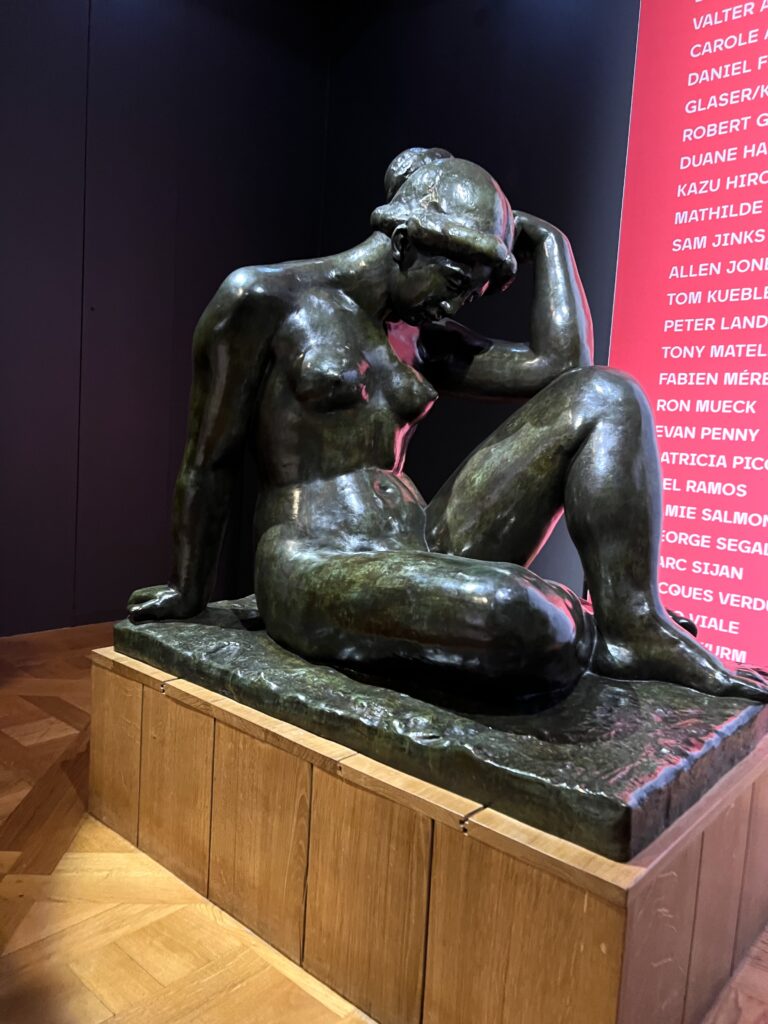
Who Was Maillol?
Aristide Maillol was an early 20th century sculptor who helped shape the course of modernism. In his early career, he painted under the tutelage of the Post-Impressionist Paul Gauguin. But in his early 30s, he switched to sculpture.
Maillol’s lifelong, and unwavering, obsession was with the female nude. Even his monuments to men were delivered in the form of the female body.
Though he was a contemporary of Rodin, he eschewed Rodin’s romanticism and expressive interpretations. Instead, Maillol used more classical forms to evoke a simplified naturalism and geometry in his figures.
His nudes are all quite similar, all with pared down architectural poses. They are simultaneously classical and abstract — stout, blocky, monumental, and smoothed over to perfection.
Some sculptures are in forceful positions. Some are allegorical, focusing on themes of air, water, and desire. Almost every sculpture is utterly expressionless, so as not to interfere with the purity of form.
Maillol’s first major nude and breakout sculpture was Mediterranean in 1905. In it, a naked young woman pauses in a moment of serenity and reflection.
Mediterranean is considered the first sculpture of 20th century modern art statuary. Of it, the novelist André Gide wrote: “It is beautiful. It signifies nothing. It is a silent artwork.”
Maillol’s most audacious sculpture was The River, La Riviere, portraying a woman wrenched over in a difficult pose. His final piece was Harmony, a truly beautiful sculpture featuring Vierny.
The monumentality and abstraction of Maillol’s sculpture would influence Brancusi and Henry Moore.
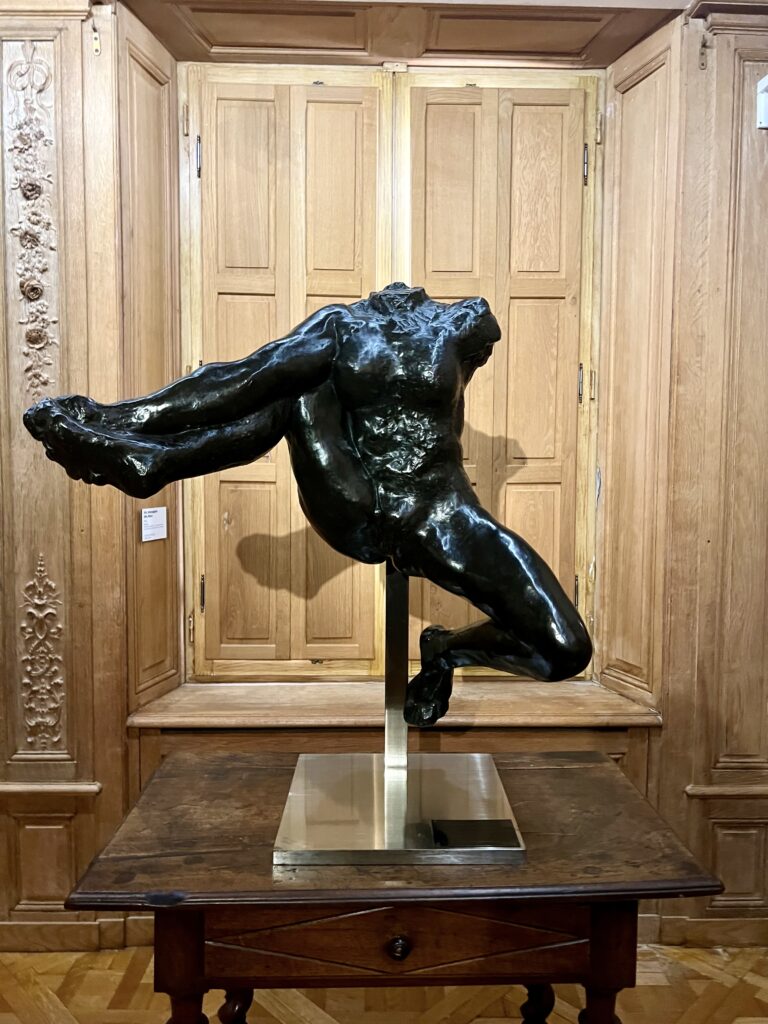
Who Was Dina Vierny?
Dina Vierny was an interesting woman who led a long and visionary life. She began modeling for Maillol in 1934 at age 15.
Over time, she became an art dealer, collector, and museum director. She dedicated her life to burnishing Maillol’s legacy.
It all began when Vierny was presented to Maillol by a friend who claimed she resembled the works of Maillol and Renoir. Maillol was 73 at the time and looking for inspiration after a dry period.
The pair became fast friends, and she his most devoted fan. Vierny was Maillol’s final muse for the last ten years of his life. Maillol saw in her the embodiment of his ideas about the “eternal feminine.”
She, in turn, was “seduced by the power of participating in creation.” Vierny also posed for his friends Raoul Dufy, Pierre Bonnard, and Henri Matisse.
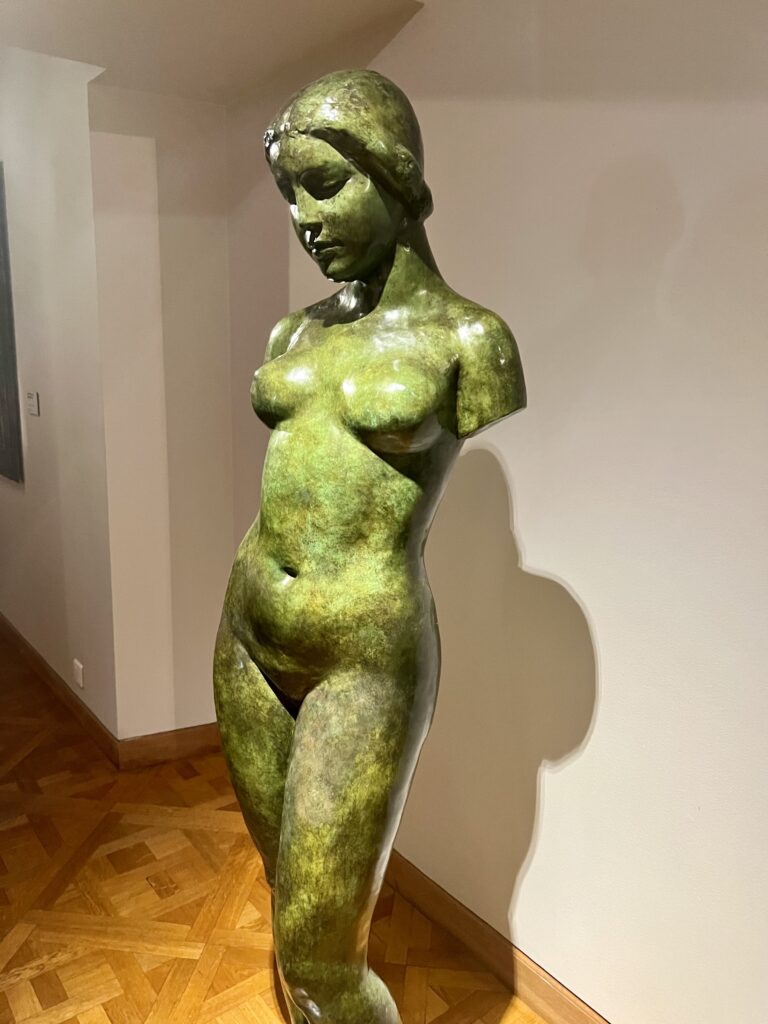
In her spare time, she worked for a Resistance network smuggling refugees and political dissidents out of Vichy France.
Maillol, on the other hand, was apolitical. Yet, despite his apparent detachment, he was friendly with Nazis and their official sculptor Arno Breker.
In 1943, Verny was arrested and Breker intervened to secure her release. She later testified for him in the post-war period, helping to rehabilitate his reputation.
In 1944, Maillol died in a car accident at age 82. Some claim that this was a ruse and that a Resistance member attacked him with a hammer.
In his will, Maillol bequeathed his fortune and collection to his son Lucien and Vierny. After Lucien’s death, Vierny was the sole heir.
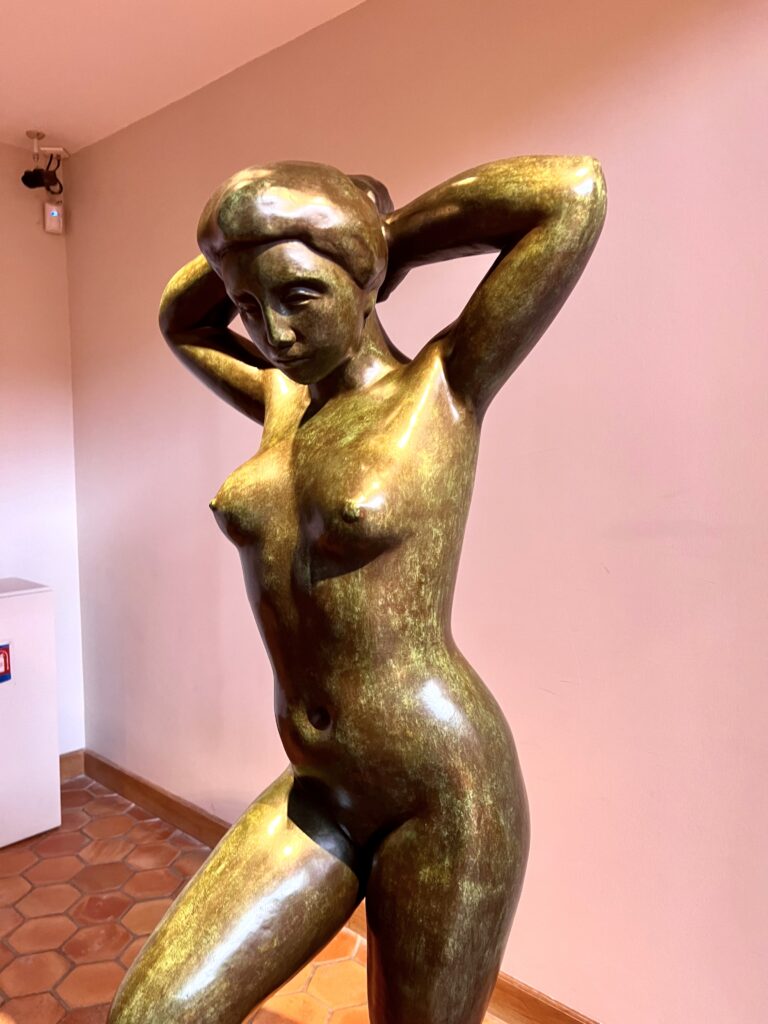
After the war, encouraged by Matisse, Vierny became a collector herself and snapped up works by Picasso, Rodin, Gauguin, Degas, and Cézanne.
In 1947, she opened a gallery on Rue Jacob in Saint-Germain. There, she specialized in Russian avant grade works, even smuggling some into the country from Russia.
In 1963, she bequeathed a collection of monumental Maillol sculptures to the French state. They now stand in the Tuileries Garden.
In 1995, Vierny opened the Musee Maillol, after spending many years renovating a hotel particulier, the Hotel Boucheron. It holds the world’s largest ensemble of Maillols — 400 sculptures, paintings, and drawings.
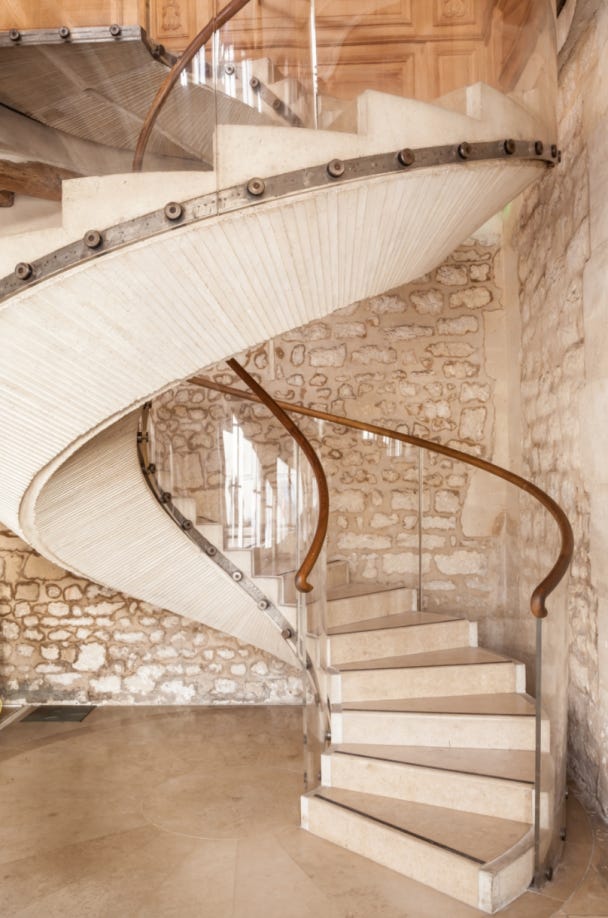
Guide To The Maillol Museum: What To See
The ground floor and first floor are devoted to temporary exhibitions. The second and third floor contain Maillol’s works and Vierny’s collection.
They are interspersed with works by Maillol’s artists friends — Picasso, Matisse, Gauguin, and Cezanne.
Here are some of the Maillol paintings I saw, whose proportions foreshadow his monumental sculptures.
In general, to me, Maillol seems a much better sculptor than painter. In fact, I never even knew he painted before visiting the museum.
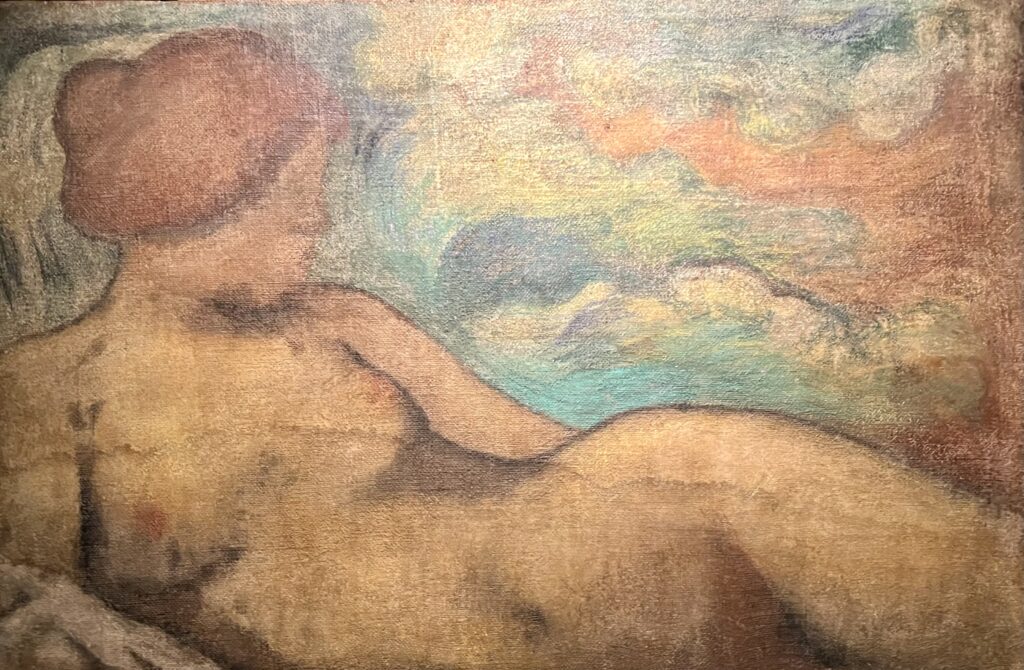
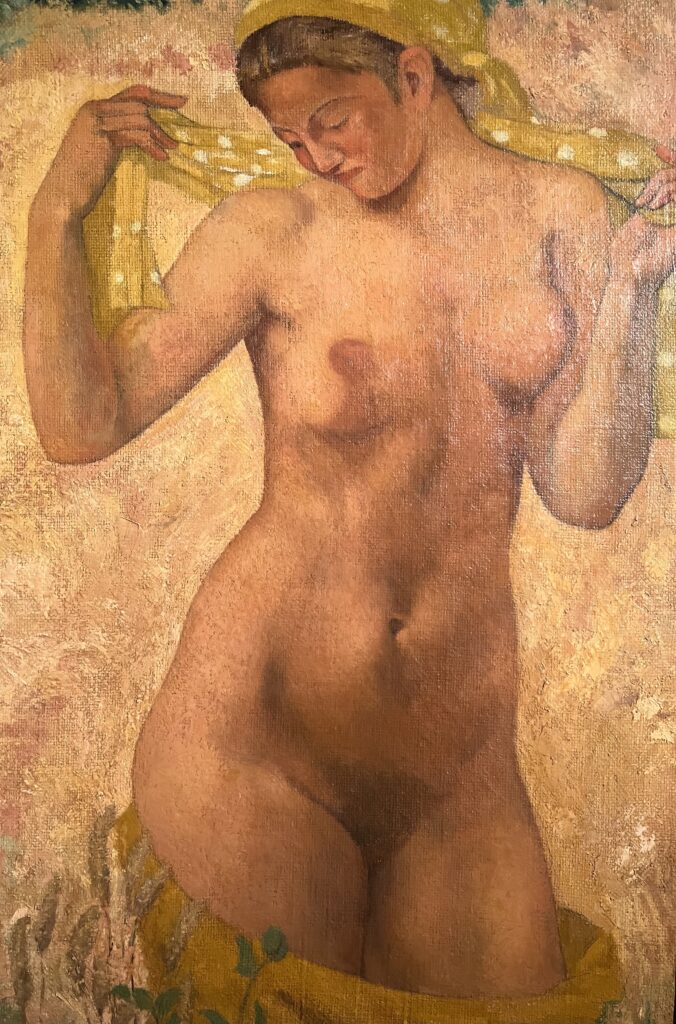
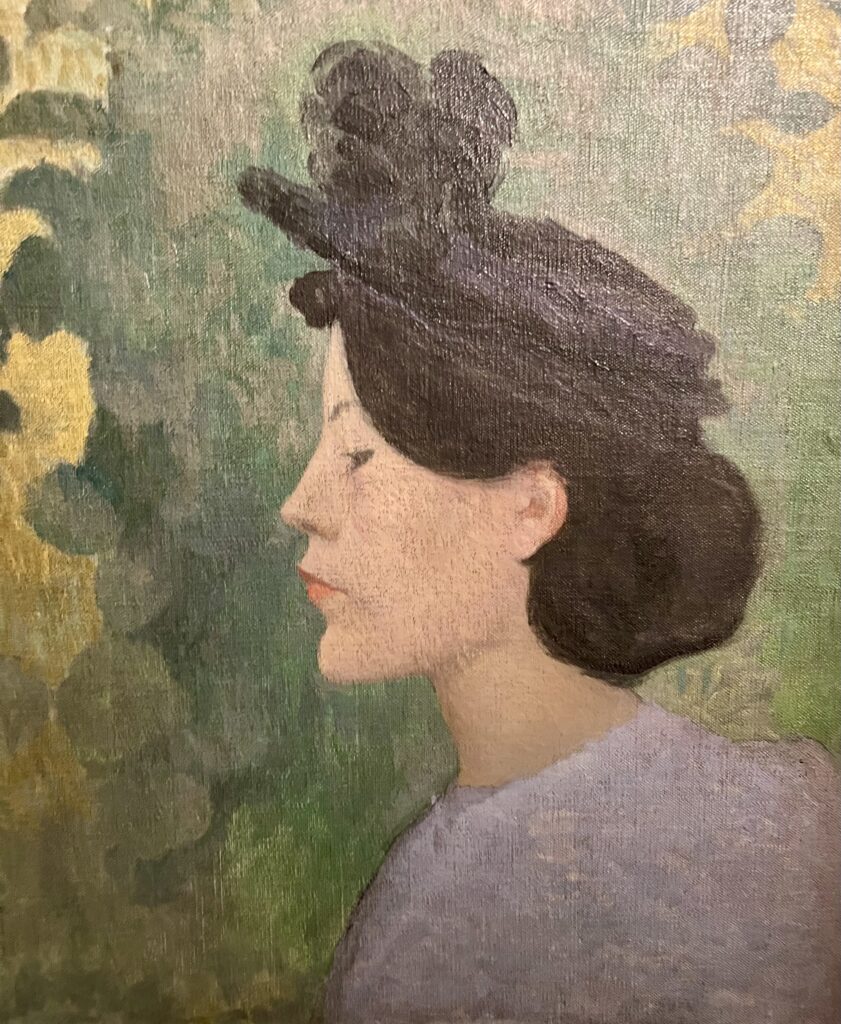
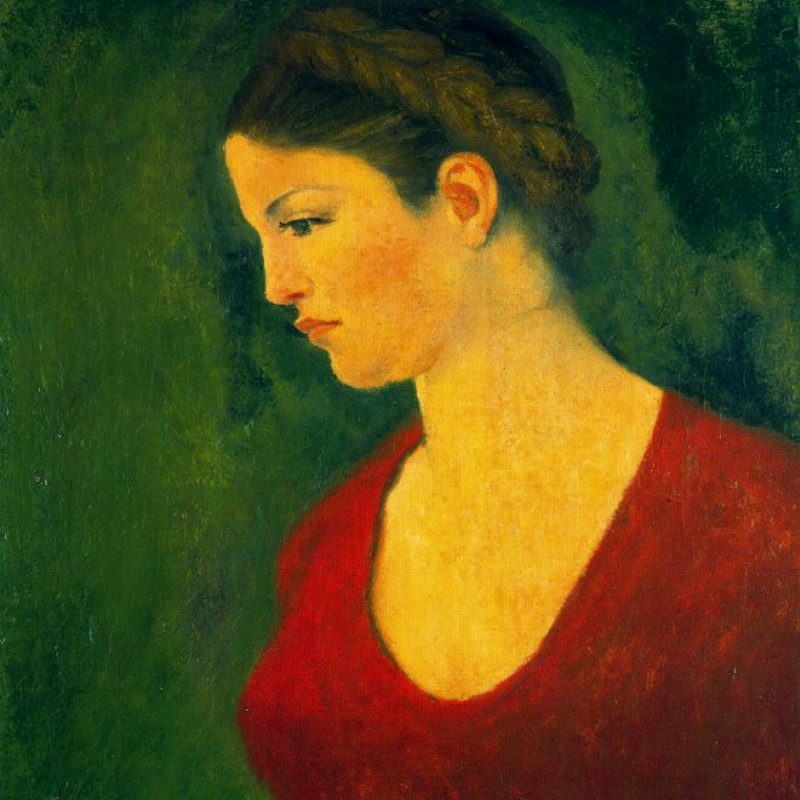
Here are some of the Maillol sculptures you’ll see in the museum.
As is typical of Maillol, these placid, full bodied women are presented without any voyeurism, false modesty, or expressionism.
They have a quasi mathematical rigor in the balance of volumes combined with round lines and stylized updos. Maillol wanted to provide a simple presentation of beauty.
The sculptures confer a sense of tranquility and timelessness. Because Maillol never took risks, they (somewhat unfortunately) have a sameness about them.
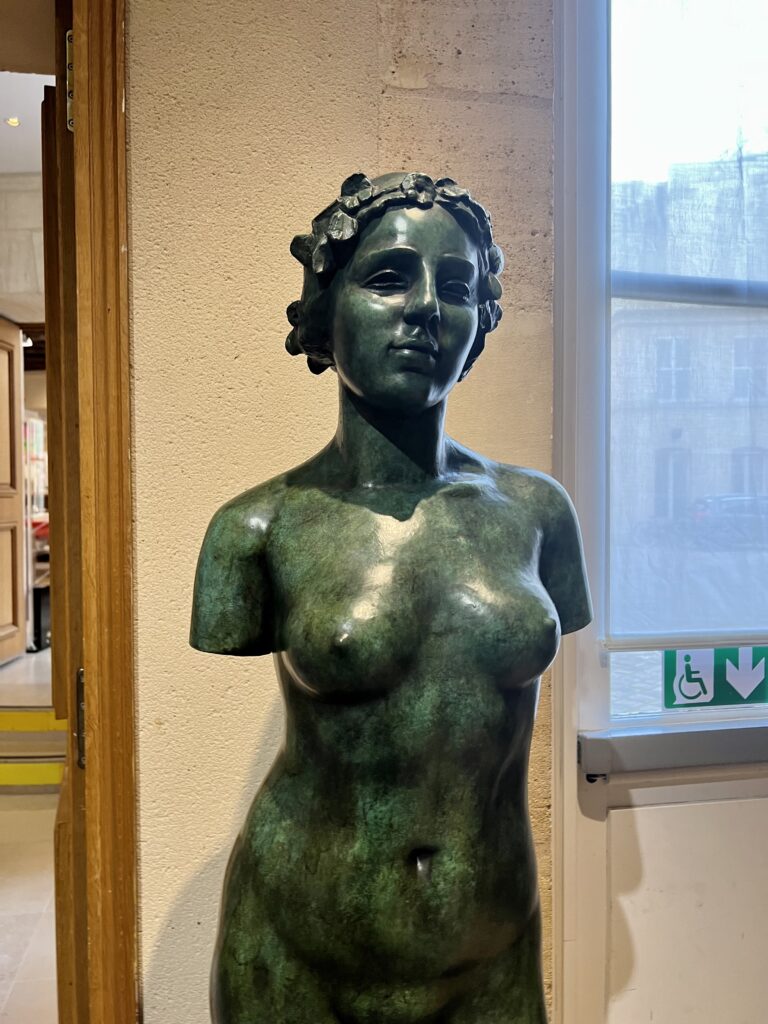
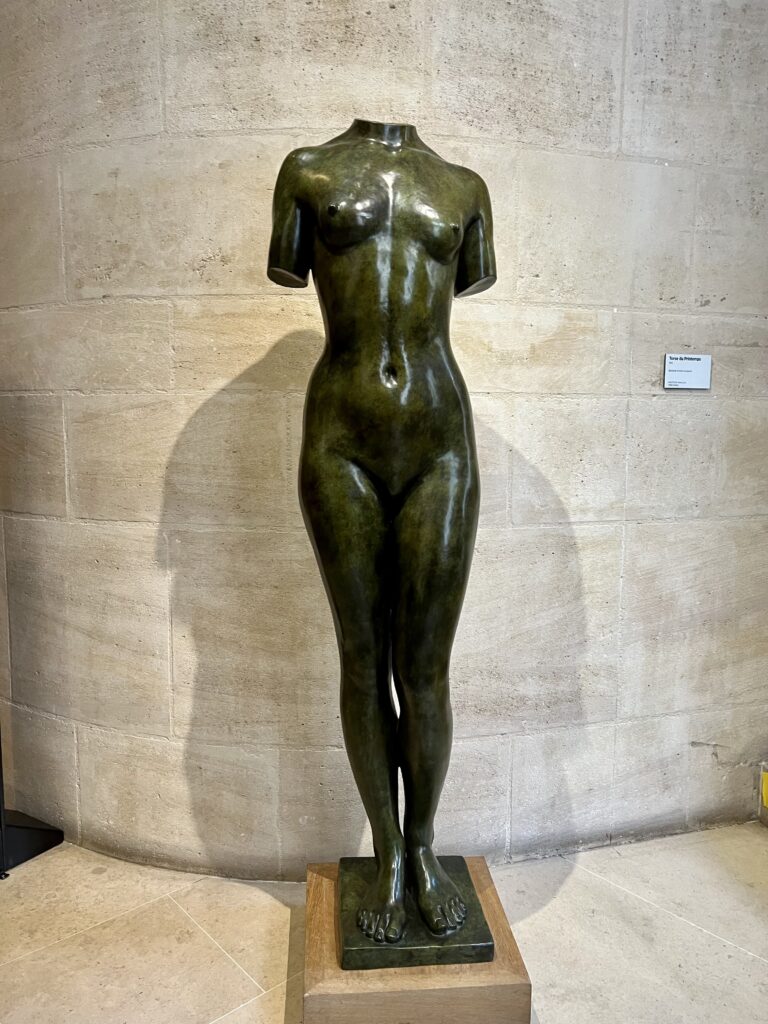
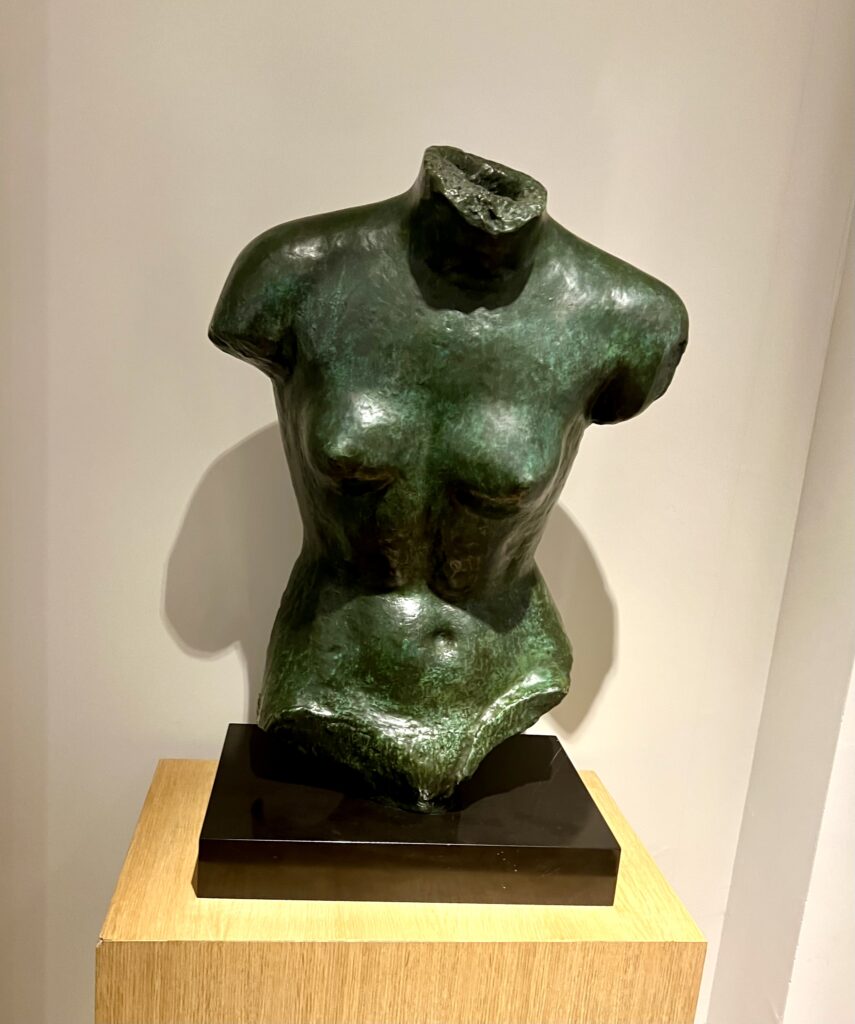
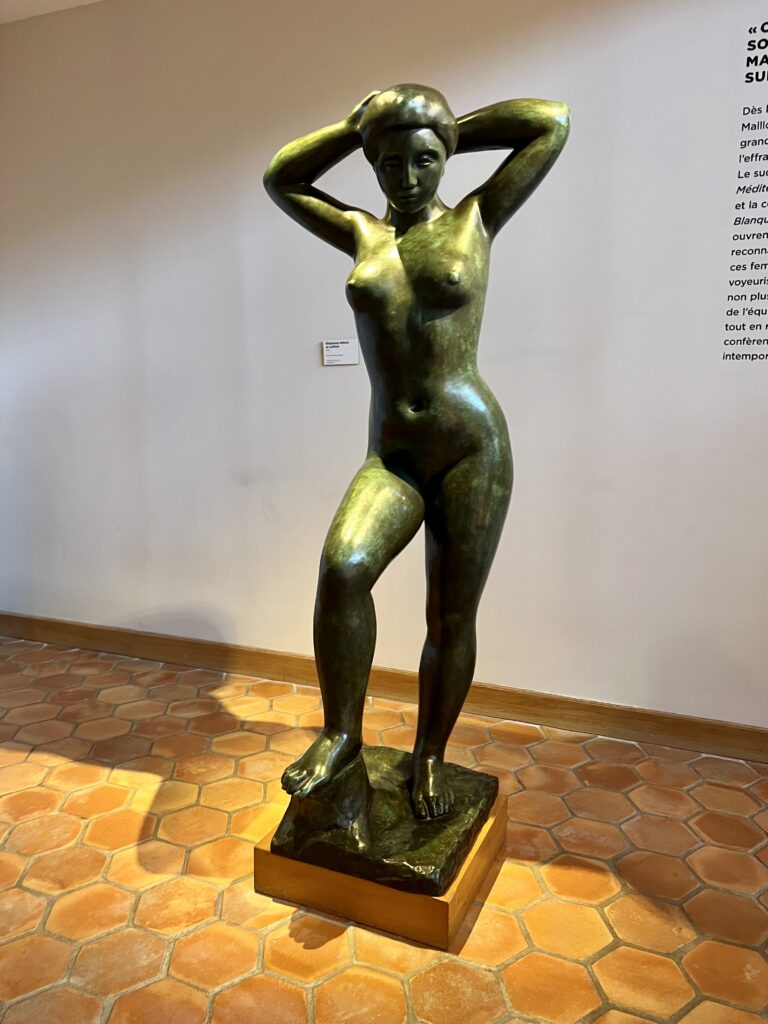
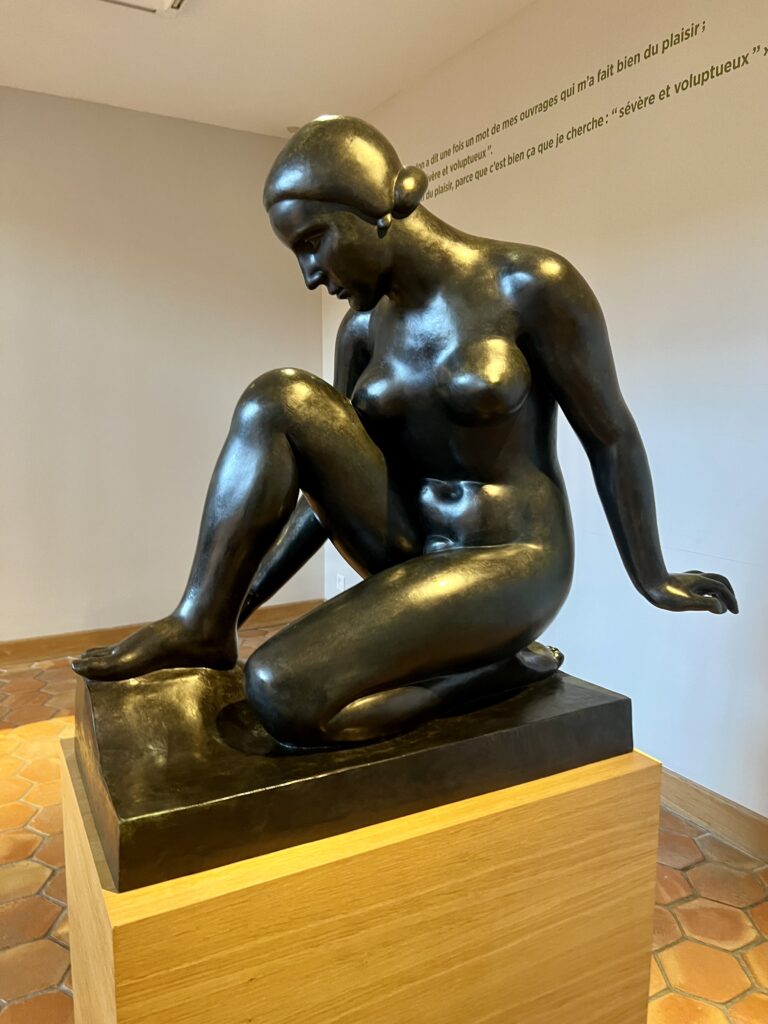
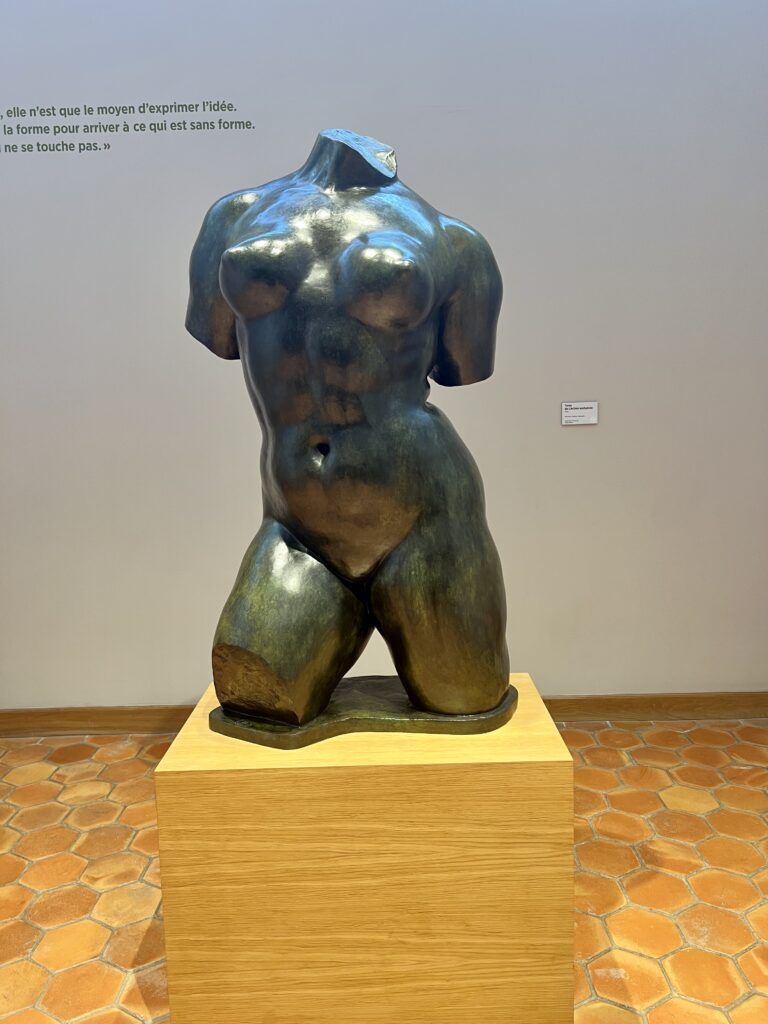
In Vierny’s collection, you will find drawings Matisse made of Vierny, drawings by Raoul Dufy, and a lovely painting of Vierny by Bonnard called Somber Nude.
The museum may be best known for its temporary exhibitions. (These exhibitions do cause some of the Maillol works to go into storage.)
In the past, I have seen exhibitions on the Medici and Artemisa Gentileschi. This time around, I saw an excellent exhibition on hyperrealist sculpture called This is not a body.
In fact, the museum even hosted an event for naked visitors, so their bodies could mirror the disturbing effect of the sculptures.
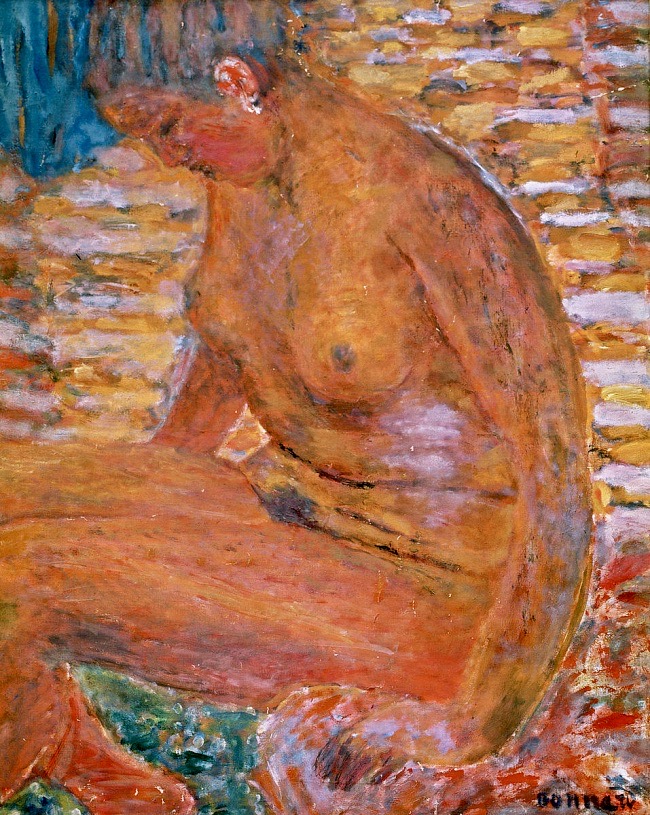
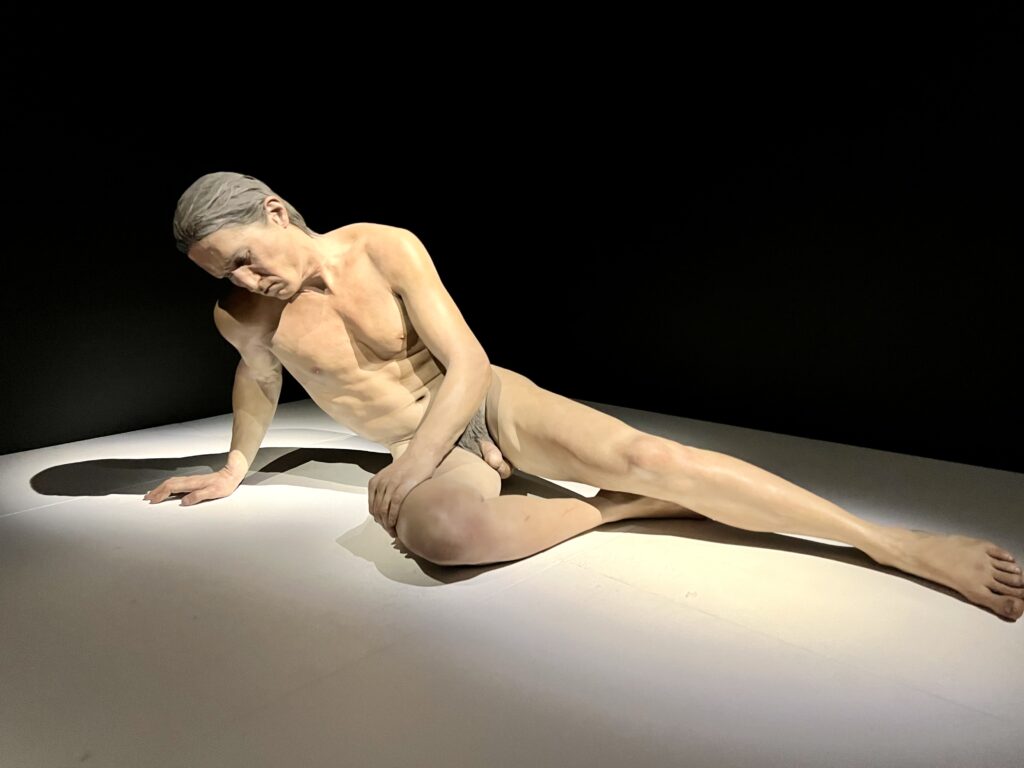
Practical Guide & Tips For The Maillol Museum
Here are some things to know about visiting the Musee Maillol.
Address: 51-56 Rue Grenelle
Hours: Open daily from 10:30 am to 6:30 pm. Friday night open until 9:30 pm.
Entry fee: € 14, € 5 for audio guide. The museum is not included in the Paris Museum Pass.
Metro: Rue de Bac, Saint-Sulpice, Sevres-Babylone
Facilities:
There is a lovely cafe in the basement, a small gift shop, and rest rooms. The cafe is Café des Frères Prévert and it’s on the grounds of a former cabaret. It has an elegant and cozy feel, with pale stone walls and green velvet chairs.
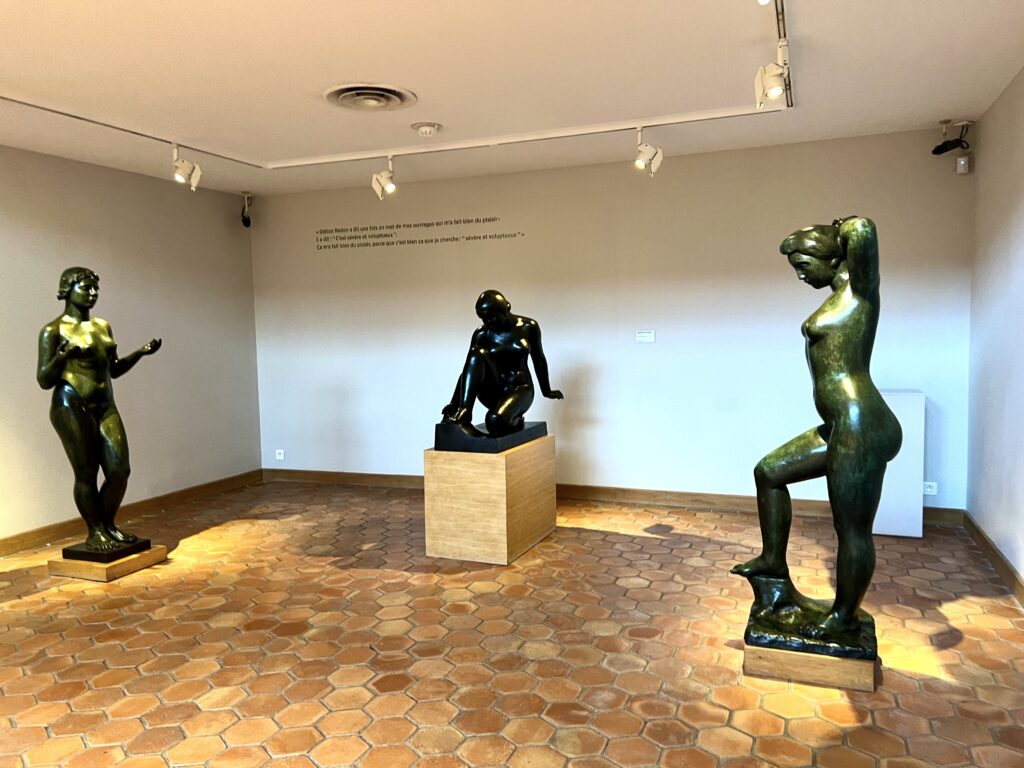
Pro Tips:
The signage is all in French in the museum. You can purchase an audio guide in English.
Or, instead, you can scan the museum’s QR code. That will download the museum’s visitor guide on your phone and give you descriptions of the works. I vastly prefer QR codes to audio guides myself.
Just outside the entrance to the Maillol Museum is the monumental Fountain of the Four Seasons by Edge Bouchardon. It’s worth a look, but definitely needs a power wash right now.
Is the Maillol Museum Worth Visting?
If you are looking for a small intimate museum in Paris, the Maillol Museum is definitely worth visiting. If you love sculpture, it’s a must visit. If you are on a budget, you might find the museum overpriced.
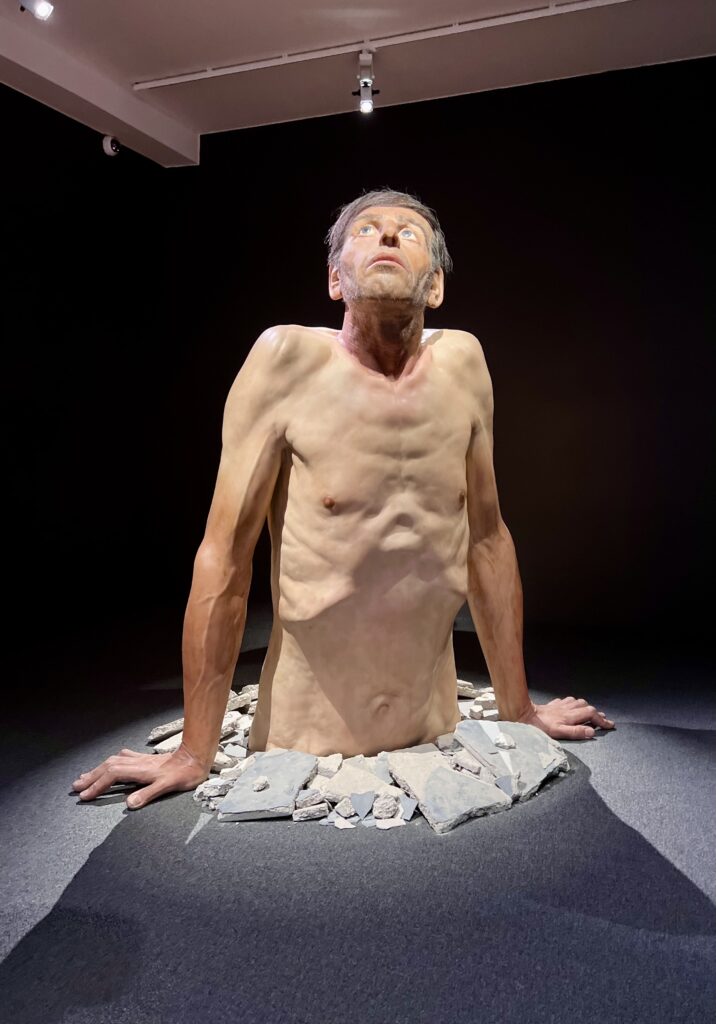
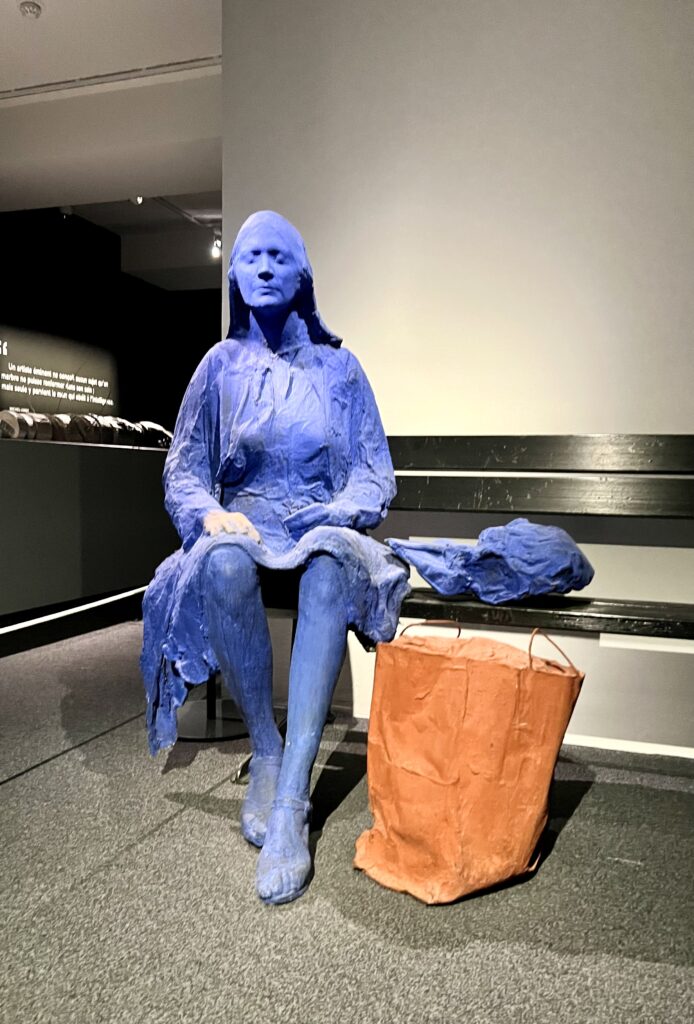
One good thing about the museum is that it’s open every day, unlike most Paris museums which close on Monday (most frequently) or Tuesday. So if you’re looking to fill space on one of those days, it’s an excellent option.
For sculpture lovers, the museum also combines well with the Rodin Museum, which is just a 10 minute walk away.
Or, to continue the Maillol theme, after your museum visit, you can stroll 15 minutes to the Tuileries Gardens and admire the Maillol sculptures installed there. Maillol always wanted his statues to be in “a huge garden” and he got his wish.
In general, I found the galleries of the permanent collection a tad cramped. And you won’t see any of Maillol’s very best works.
Still, it’s the unique collection of a unique woman and definitely worth an hour or so of your time (more if you’re attending an exhibition as well).
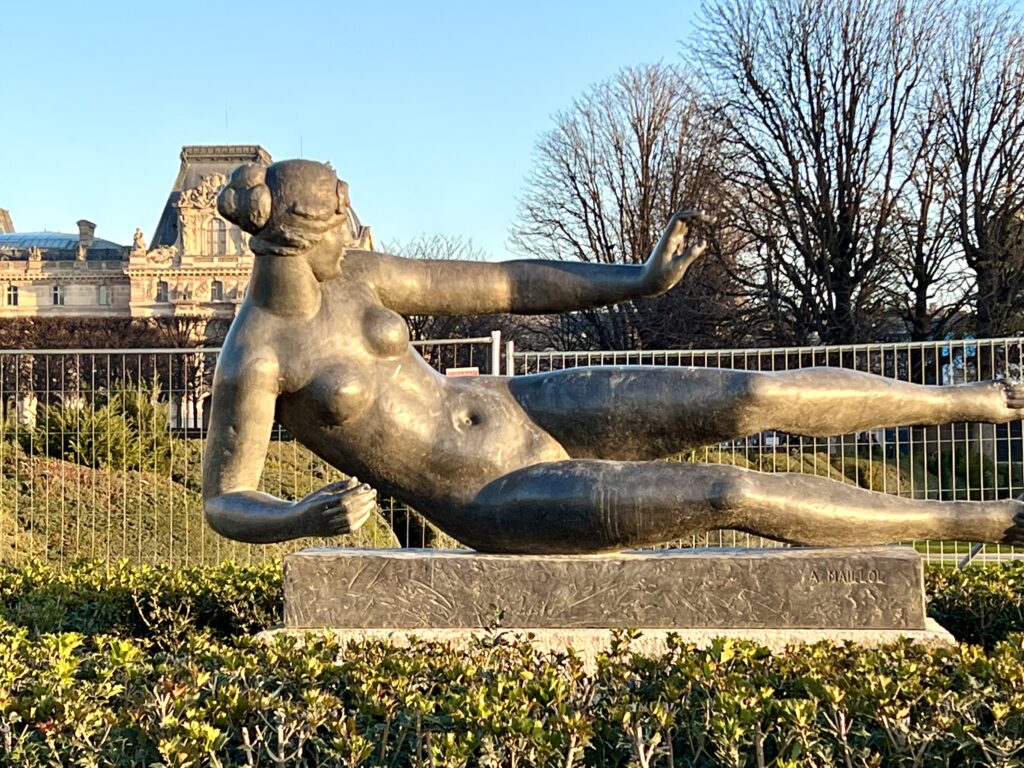
The part I enjoyed most was the current special exhibition, the price of which is included in your ticket to the permanent collection. The gallery spaces were bigger and the exhibition, as per usual, was excellent and very popular with Parisians.
I hope you’ve enjoyed my guide to the Musee Maillol. You may enjoy these other Paris travel guides and resources:
- 5 Day Itinerary for Paris
- 3 Day Itinerary for Paris
- 2 Day Itinerary for Paris
- Tips for Planning a Trip to Paris
- Tourist Traps To Avoid In Paris
- Top Attractions in Montmartre
- Top Attractions in the Marais
- Best Museums In Paris
- Hidden Gems in Paris
- Best Things To Do in Paris in Winter
- Guide to the Opera District
- Secret day trips from Paris
If you’d like to visit the Maillol Museum, pin it for later.
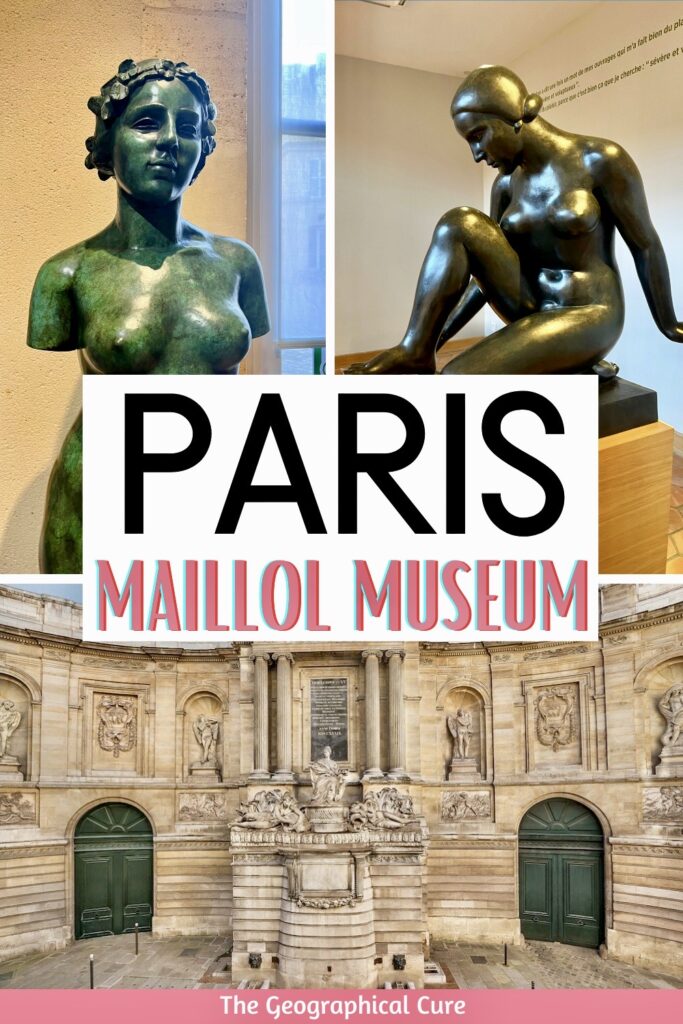
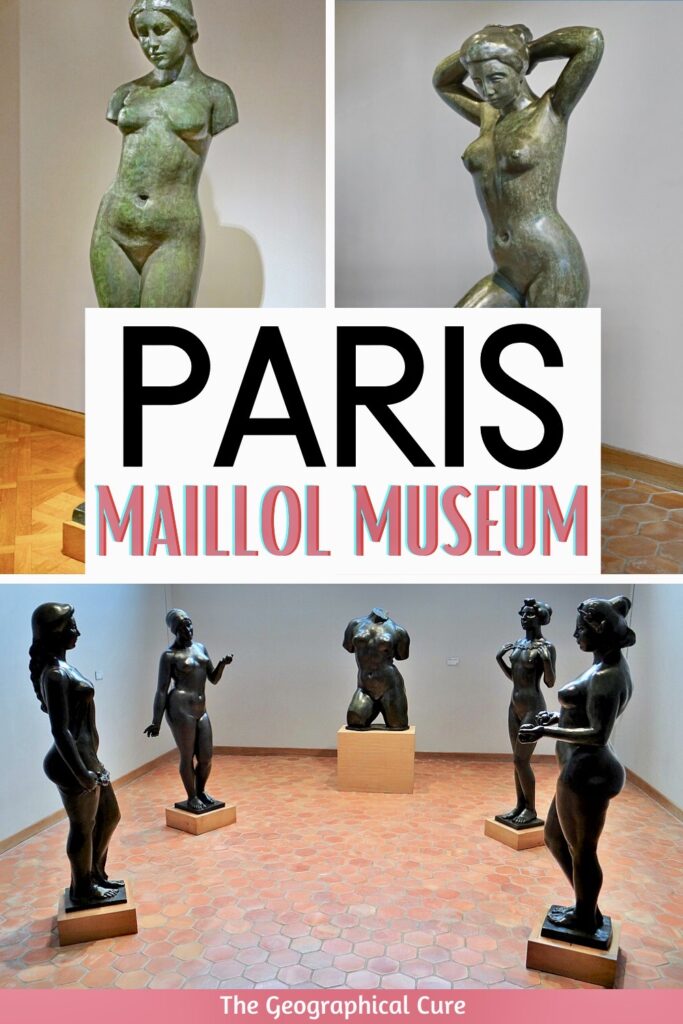

Thank you, thank you! As I will never get to Paris, I have been writing
a fictional haibun (Japanese travel log) of Paris. Only this week did I learn of Maillol and Vierny. Your site seems the best to me of the museum, the history and the art of any I’ve found. It was as if I were in Paris.
Thank John. I’m glad it gave you that feeling. It’s a very nice small museum with heart. Good luck on the writing!